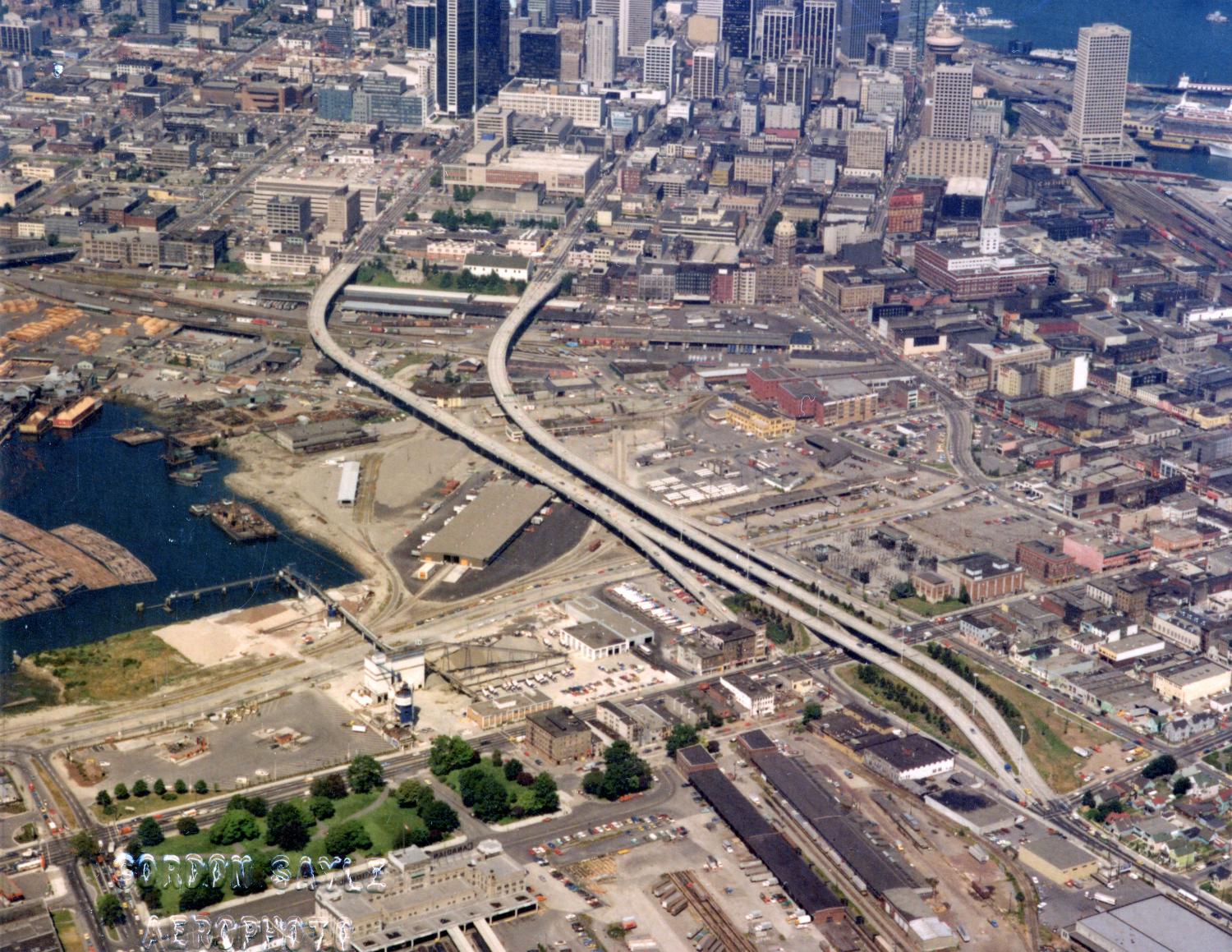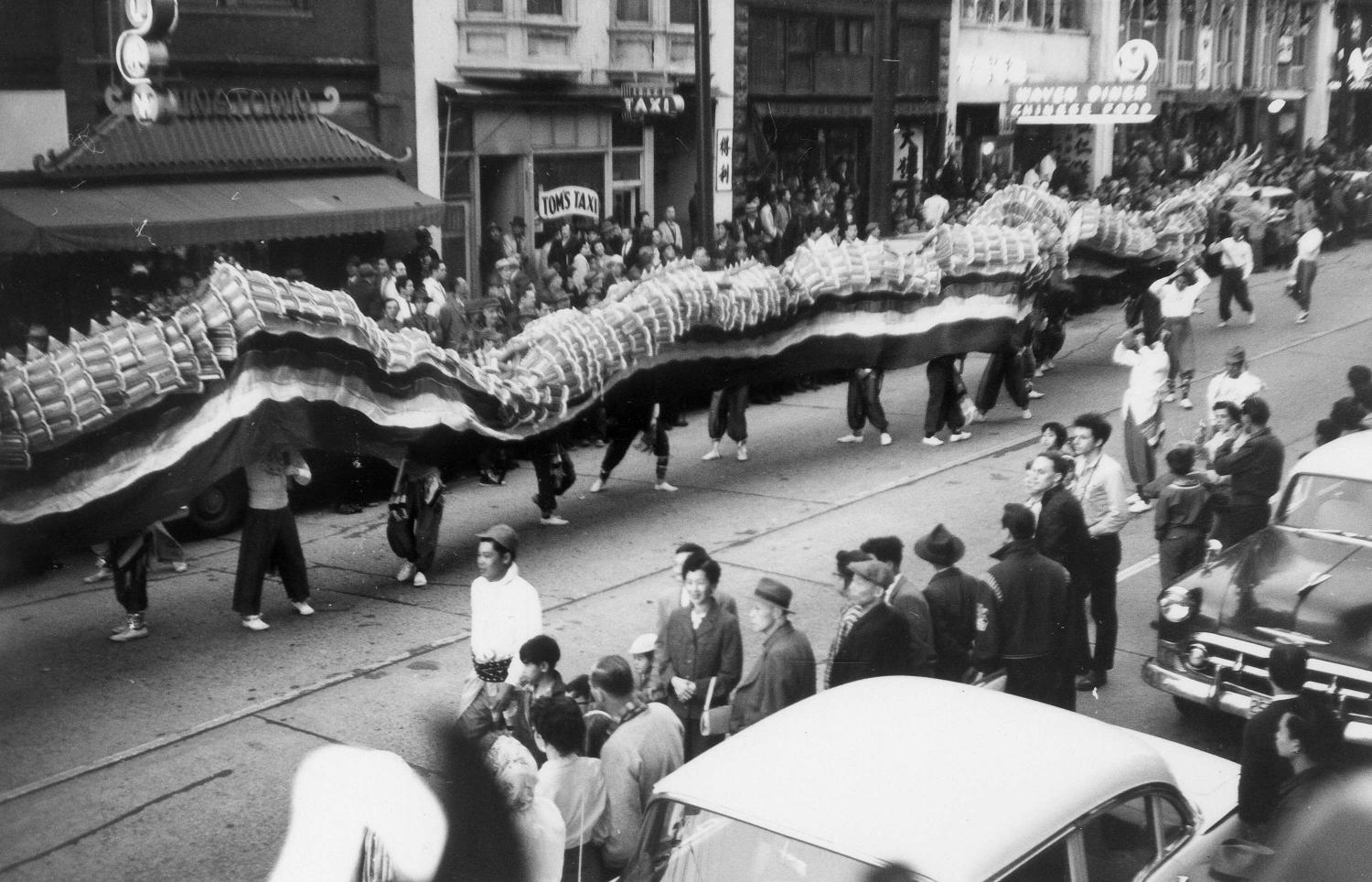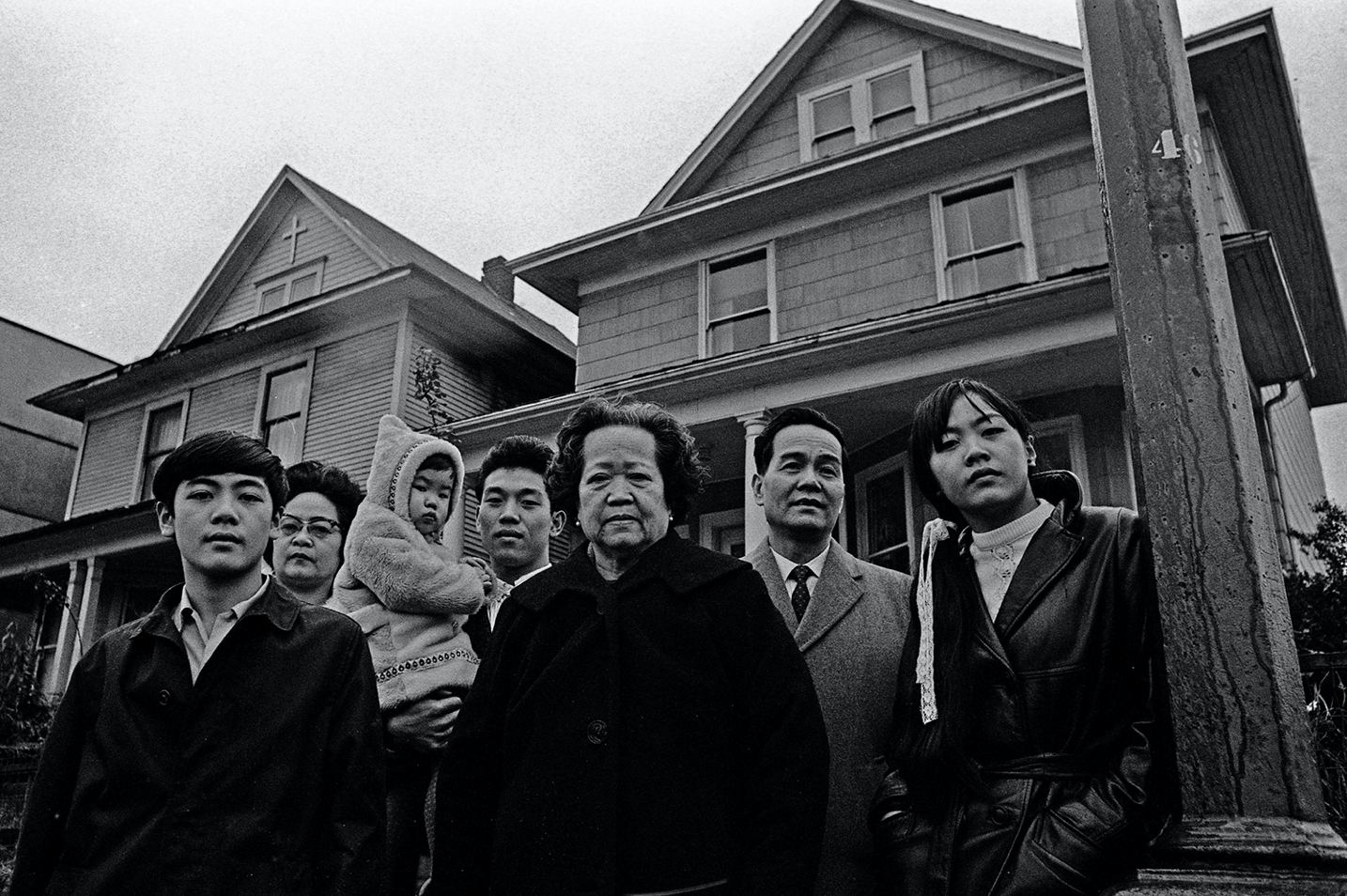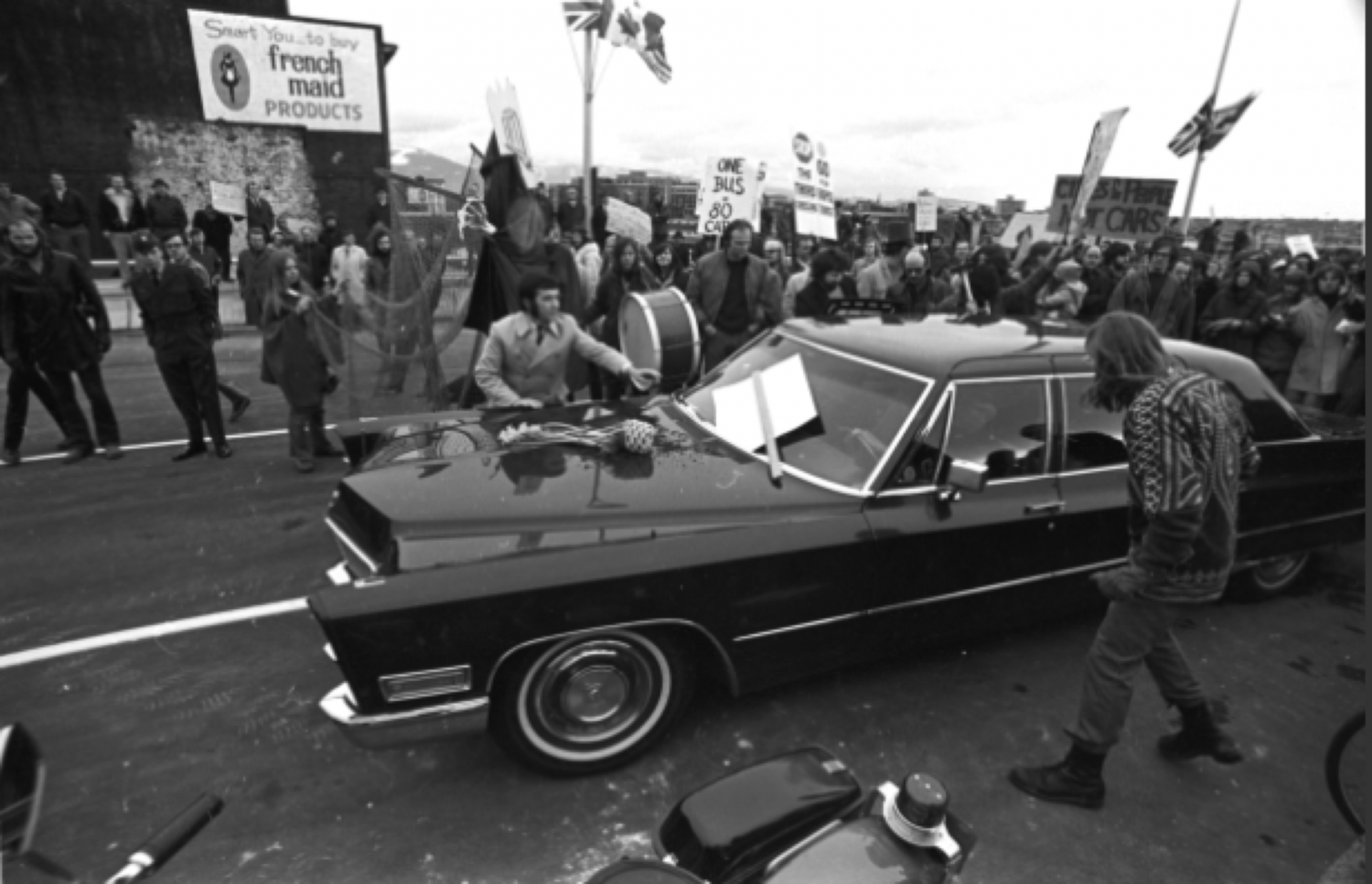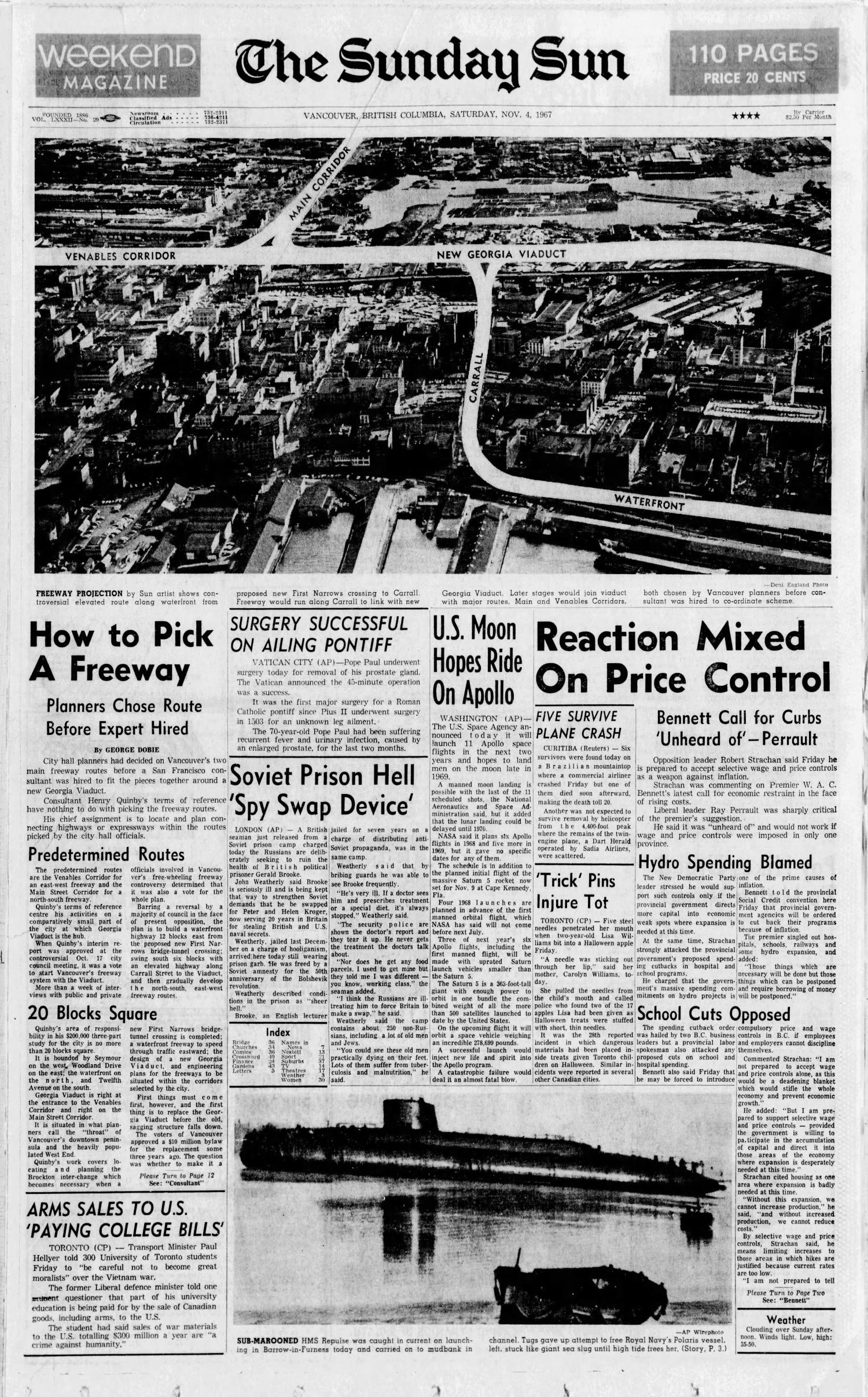The Fight to Save Chinatown
A grassroots campaign stops a freeway from slicing through the historic neighbourhood
Date: 1967
The car was king.
As more and more families moved to the suburbs after World War II, many North American cities began planning their towns around the automobile. Massive urban freeway projects sprang up in cities like Los Angeles and Seattle — and, very nearly, Vancouver.
Beginning in the mid-1950s, governments and business began planning for a freeway that would run directly into Vancouver’s downtown. Dubbed Project 200, it was estimated to cost more than $1.5 billion in today's dollars and would have razed much of Strathcona, Chinatown, Gastown and the West End. In 1967, the City of Vancouver approved one core element of Project 200: an elevated eight-lane freeway along Carrall Street in Chinatown. But despite promises, the city hadn't consulted Chinatown residents. “This freeway will destroy Chinatown,” Dean Leung, co-chair of the Chinese Benevolent Association, told the Vancouver Sun following the announcement.
For years, governments had embraced a new planning doctrine called “urban renewal,” a ‘tear-it-down-and-rebuild’ way of thinking which prioritized land value over people. Major infrastructural projects like Project 200 fit into this model. Planners, city officials and newspapers fixated on so-called “blight” — low-income and sometimes rundown neighbourhoods that were often home to new immigrants and people of colour, like Chinatown and Strathcona. By the early 1960s, Vancouver had already begun demolishing old homes in Strathcona. They replaced them with housing projects. More than a thousand mostly Chinese residents were displaced. Chinatowns across B.C. faced similar threats in the past.
The city council's decision to sacrifice historic Chinatown marked a turning point. After the announcement, hundreds marched in protest. Soon an anti-freeway movement made up of residents, business people, academics and students had taken shape They often met in living rooms slated for demolition. Raucous public meetings at city hall, later dubbed the Chinatown Freeway Debates, overflowed with opponents to the project. Though Mayor Tom Campbell cast the protesters as "Maoists, communists, pinkos, left-wingers and hamburgers," many were simply Chinese seniors who didn’t want to live in the shadow of a towering freeway.
There were also grassroots organizers like Mary Lee and her husband Walter Chan. After hearing their home would soon be lost, Mary Lee went door-to-door to recruit people to the cause, often accompanied by her daughter Shirley there to translate. Alongside community organizer Bessie Lee, the Chans founded the Strathcona Property Owners and Tenants Association in 1968. The group found allies in respected academics and even people inside city hall. Urban planning pioneer Peter Oberlander resigned his post as chair of the Town Planning Commission in protest. Darlene Marzari, a city planner, used her position in government to try and sabotage the freeway. "My job was to relocate hundreds of Chinese families, to convince them the plan was okay," she later recounted. "Instead, I helped convince them to organize against us."
Cracks in the project first appeared in November 1967 when the federal government announced a nationwide freeze on funding for urban renewal. But the project moved forward. By the early 1970s, construction of the Dunsmuir and Georgia viaducts at the edge of Chinatown was underway, erasing Hogan’s Alley, Vancouver’s only Black neighbourhood.
It all came to a head at the grand opening of the viaducts in 1972. Protesters bombarded the mayor’s limo as it made its way over the new roadway. A few months later, anti-freeway candidates won a majority on city council and business leader Art Phillips, another freeway critic, was elected mayor. “The first thing we did was fire the planning department and let the freeway project die,” Mike Harcourt, then a new city councillor, said years later. The fresh-faced city hall ushered in a new approach to planning, with an emphasis on community consultation. In 2015, more than 40 years later, Vancouver announced that the twin viaducts at the edge of Chinatown would be torn down.
Sources:
- British Columbia Geography Open Textbook Collective. "Case Study I: The Georgia and Dunsmuir Viaducts." British Columbia in a Global Context, 8 Sept. 2014, https://opentextbc.ca/geography/chapter/2-4-case-studies/.
- "Chinese Seethe over Freeway." Vancouver Sun, 18 Oct. 1967, p. 2.
- Hon, Byron, et al. No Freeways on the Horizon: The Path to Livability. University of British Columbia, 11 Apr. 2017, https://open.library.ubc.ca/cIRcle/collections/undergraduateresearch/52966/items/1.0355546.
- Jessup, Alan. "‘Blight’ Is Vancouver’s Most Costly Disease." Vancouver Province, 26 Apr. 1956.
- Kevlahan, Nicholas. "A Distant Mirror: 40 Years of Urbanism in Vancouver." Raise the Hammer, 2 Aug. 2011, https://www.raisethehammer.org/article/1427/a_distant_mirror:_40_years_of_urbanism_in_vancouver.
- MacKenzie, Ken. Freeway Planning and Protests in Vancouver 1954-1972. Simon Fraser University, 1985, https://core.ac.uk/download/pdf/56370103.pdf.
- Mackie, John. "What Might Have Been." Vancouver Sun, 19 Jan. 2008, https://www.pressreader.com/canada/vancouver-sun/20080119/281956013463269.
- Mark, Tyler Tadao Taiming. Culturally Appropriate Community Engagement in Vancouver’s Chinatown. University of British Columbia, 2019.
- Marsa, Linda. "How Vancouver, B.C. Became North America’s Smart-Growth Leader." High Country News, 31 Jan. 2014, https://www.hcn.org/issues/46.1/mary-lee-and-the-butterfly-effect.
- Miro, Jacopo. Visions of False Creek: Urban Development and Industrial Decline in Vancouver, 1960-1980. University of Victoria, 2011, http://dspace.library.uvic.ca/bitstream/handle/1828/3513/Miro_Jacopo_MA_2011.pdf?isAllowed=y&sequence=1.
- Price, Gordon. "Project 200: The Lost Vision of Our Waterfront." Price Tags, 22 Mar. 2012, https://pricetags.ca/2012/03/22/project-200-the/.
- Scott, Curtis. "The End of Hogan’s Alley - Part 1." Spacing Vancouver, 12 Aug. 2013, http://spacing.ca/vancouver/2013/08/12/the-end-of-hogans-alley-part-1/.
- Stiem, Tyler. "Story of Cities #38: Vancouver Dumps Its Freeway Plan for a More Beautiful Future." The Guardian, 9 May 2016, http://www.theguardian.com/cities/2016/may/09/story-cities-38-vancouver-canada-freeway-protest-liveable-city.
- Tennant, Paul. "Vancouver Civic Polities 1929-1980." BC Studies, vol. 46, 1980.
